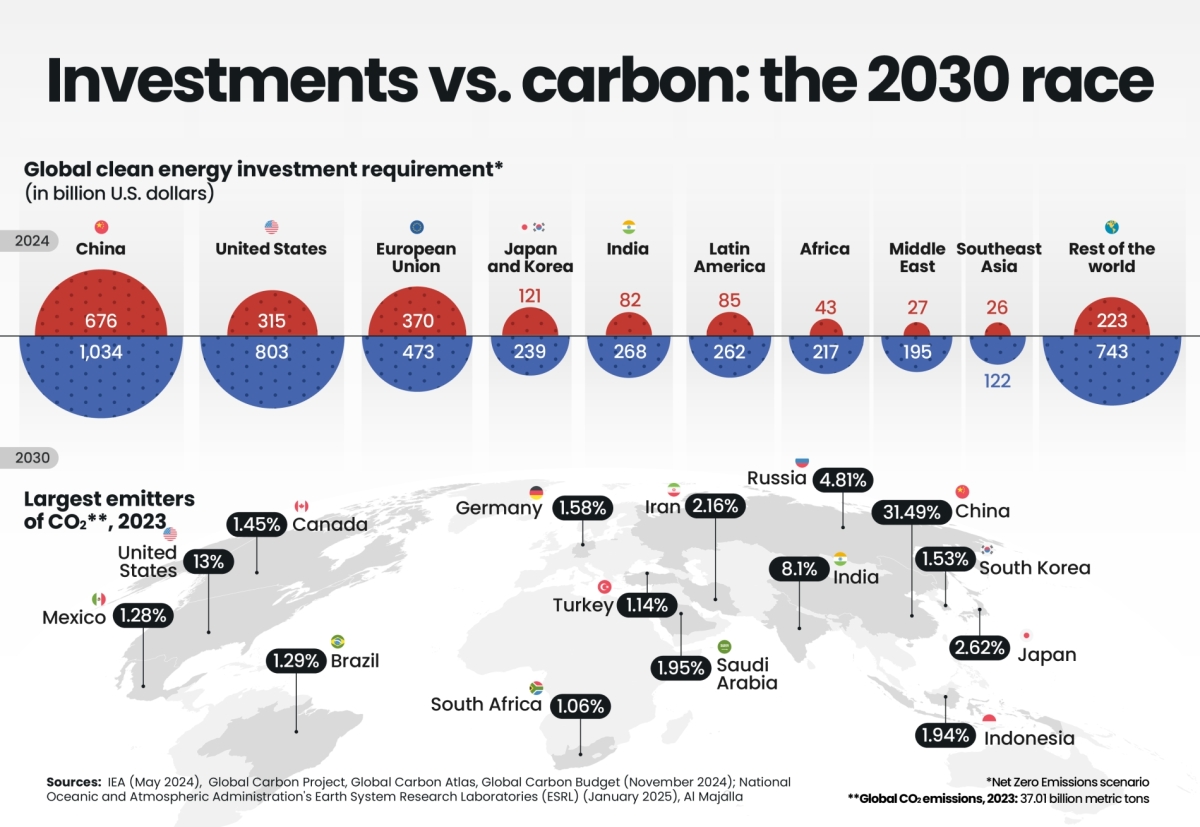Global investment in clean energy technologies reached nearly $2tn in 2024, signalling the strongest momentum yet toward a low-carbon future. Yet, despite this record spending, experts warn it remains far short of what's needed to meet COP28 goals—limiting warming to 1.5°C and achieving net-zero emissions by 2050. To stay on track, investment must double by 2030, with clean power alone requiring around $2.3tn annually.
China dominates the energy transition race, accounting for one-third of global clean energy investment in 2024, while also remaining the world's largest carbon emitter, responsible for over 31% of global CO₂ emissions. The United States follows with $315 billion this year, projected to reach $803bn by the end of the decade, while it is responsible for 13% of global CO₂ emissions.
Together, China and the US account for more than half of the world's clean energy investments, while the four biggest polluters produce roughly 60% of total emissions, underscoring the concentration of climate responsibility.
Despite a global push for decarbonisation, CO₂ emissions from fossil fuels and industry hit a record 37.01 billion metric tonnes in 2023 and are projected to climb another 1.08% in 2024. Since 1990, emissions have surged by more than 60%, primarily driven by the industrial expansion of developing economies.
Some progress has been made: the UK cut its emissions by nearly 50% since 1990, and Germany by about 43%. However, these gains are offset by soaring emissions in emerging markets, particularly China, whose CO₂ emissions have increased by 450% since 1990.








